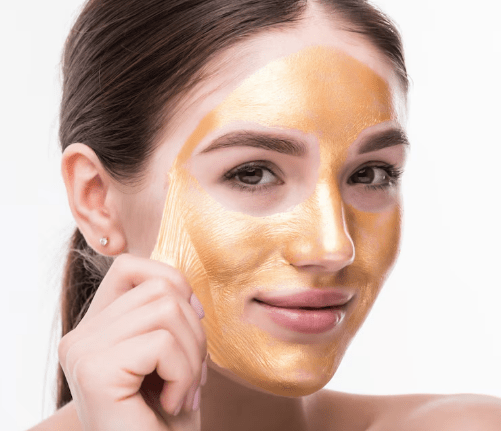Treatment Overview
Cooling masks are a cornerstone of Korean dermatology aftercare for patients with redness, flushing, and vascular sensitivity. These masks use cold therapy combined with soothing botanicals, peptides, or barrier-strengthening agents to reduce post-treatment redness, calm reactive skin, and restore balance to the skin barrier.
They are commonly applied after laser sessions, chemical peels, or exfoliation treatments, but are also offered as standalone therapy for individuals with sensitive or rosacea-prone skin. Korean dermatology clinics emphasize cooling masks as an immediate relief measure that both soothes skin and enhances long-term vascular stability.
For redness and flushing, Cooling Mask Therapy:
- Provides instant cooling and calming for inflamed skin.
- Reduces redness after laser or peel procedures.
- Hydrates and supports barrier repair.
- Minimizes flushing episodes by lowering skin surface temperature.
Purpose & Benefits
- Immediate Redness Relief: Calms skin after dermatology procedures.
- Temperature Regulation: Lowers skin temperature to reduce flushing.
- Barrier Support: Infused with ingredients like Centella, panthenol, or hyaluronic acid.
- Hydration: Restores moisture balance in sensitive skin.
- Versatility: Can be used as part of multi-step clinic programs or home care.
Ideal Candidates
Cooling Mask Therapy in Korea is recommended for:
- Patients undergoing lasers, peels, or microneedling who need post-care relief.
- Individuals with rosacea, post-inflammatory erythema, or sensitive skin.
- Adults with heat-triggered flushing or vascular reactivity.
- Patients looking for non-invasive redness management.
- Those who prefer gentle, soothing therapies over systemic medications.
Comparison with Other Treatments
- Cooling Masks: Best for immediate redness relief and barrier support; non-invasive.
- Anti-Redness Lasers (PDL, V-Beam, Nd:YAG): Directly shrink vessels; long-term results.
- Antibiotics (Doxycycline, Minocycline): Systemic anti-inflammatory control; internal action.
- Beta-Blockers (Propranolol, Carvedilol): Reduce stress/heat-triggered flushing; systemic therapy.
- Chemical Peels (Gentle Korean-style): Smooth skin and reduce post-acne redness, mild vascular effect.
- Barrier Creams (Centella, Panthenol, Madecassoside): Long-term strengthening, less immediate soothing.
Possible Risks & Complications
Cooling masks are considered very safe, but may occasionally cause:
- Temporary tightness if left on too long.
- Rare allergic reaction to active ingredients (herbal extracts, peptides).
- Mild rebound flushing if skin is overcooled.
Treatment Techniques Used
- Application: Applied as sheet masks, hydrogel masks, or cream masks.
- Duration: Left on skin for 10–20 minutes.
- Frequency: Immediately after dermatology procedures; 1–2 times weekly for maintenance.
- Combination Therapy: Often paired with LED therapy, infusions, or barrier serums.
- Clinic Integration: Korean clinics store masks in refrigerated units for enhanced cooling effect.
Recovery & Aftercare
- Immediately After Use: Redness and heat sensation decrease.
- 1–2 Days: Improved hydration and barrier recovery.
- Maintenance: Regular use prevents relapse of flushing and irritation.
Aftercare Tips:
- Pair cooling masks with gentle, fragrance-free moisturizers.
- Avoid strong actives (retinoids, exfoliants) for 24–48 hours post-mask if applied after procedures.
- Store home-use masks in the refrigerator for added cooling effect.
- Use alongside sunscreen daily for redness-prone skin.
Results & Longevity
- Short-Term (Immediately–1 Day): Instant soothing and redness reduction.
- Medium-Term (2–4 Weeks): Stronger barrier, less frequent flushing.
- Long-Term: Consistent improvement in skin tolerance with ongoing use.
Treatment Process in Korea
- Consultation & Skin Assessment – Dermatologist identifies redness triggers and skin sensitivity.
- Selection – Cooling mask formula chosen (Centella, hyaluronic acid, peptide, or herbal infusion).
- Application – Mask applied post-laser, peel, or as a stand-alone calming session.
- Clinic Add-Ons – Often followed by LED calming light, soothing serum infusion, or cryo-therapy.
- Follow-Up – Masks recommended for at-home use between clinic sessions.
Why Korea is a Top Destination
- Wide availability of medical-grade cooling masks infused with advanced actives.
- Integration of cooling masks into post-laser redness care protocols.
- Affordable compared to Western dermatology aftercare sessions.
- Emphasis on multi-step barrier restoration and sensitivity management.
- Korean clinics lead in innovative skin-calming mask technologies (hydrogel, bio-cellulose).
Cost Range (Detailed Breakdown)
Pricing for Cooling Mask Therapy in Korea for redness & flushing:
- Single In-Clinic Cooling Mask Session: USD 40 – 80.
- Clinic Add-On (Laser or Peel + Cooling Mask): USD 80 – 150.
- Premium Redness Recovery Package (Laser + Cooling Mask + Infusion): USD 500 – 1,200 (3–5 sessions).
- At-Home Medical-Grade Cooling Masks (5–10 pieces): USD 20 – 60.
Additional Costs in Korea:
- Barrier creams (Panthenol, Centella, Propolis): USD 30 – 80.
- Sensitive-skin sunscreens: USD 20 – 50.
💡 Patients often call cooling masks the “instant calm treatment”, since they provide fast relief after redness-triggering treatments or environmental stress.
Popular Clinics in Seoul
- Oracle Dermatology – Post-laser redness care with hydrogel cooling masks.
- Banobagi Dermatology – Customized cooling mask programs with LED light therapy.
- Renewme Skin Clinic – Cooling masks combined with infusion serums for rosacea patients.
- View Plastic & Dermatology – Premium redness packages with mask + cryo-therapy.
- Chaum Anti-Aging Center – Advanced hydrogel masks integrated with vascular laser aftercare.




